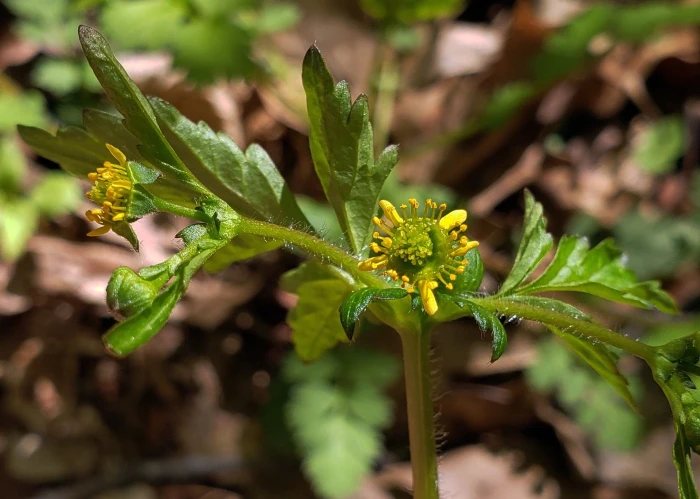Spring Avens
(Geum vernum)
Spring Avens (Geum vernum)
/
/

aarongunnar
CC BY 4.0
Image By:
aarongunnar
Recorded By:
Copyright:
CC BY 4.0
Copyright Notice:
Photo by: aarongunnar | License Type: CC BY 4.0 | License URL: http://creativecommons.org/licenses/by/4.0/ | Rights Holder: aarongunnar | Publisher: iNaturalist | Date Created: 2019-05-14T10:16:35-07:00 |






















Estimated Native Range
Climate Requirements
| • Precipitation | 29" - 75" |
| • High Temp. | 67°F - 93°F |
| • Low Temp. | 3°F - 32°F |
Summary
Geum vernum, commonly known as Spring Avens, is an herbaceous perennial native to the rich, mesic woodlands and floodplain forests of the northeastern United States. It typically grows up to 1.6 feet tall and features yellow flowers that bloom from May to June, which are modest in size but can add a splash of color to woodland gardens. The plant has a basal rosette of leaves from which the flowering stems arise, and the flowers are simple and rotate with five petals, characteristic of the Rosaceae family.
Spring Avens is valued for its ecological role in native plantings and its potential antimicrobial properties, which have been the subject of scientific studies. It is often used in woodland gardens and naturalized areas where it can contribute to biodiversity. In cultivation, Spring Avens prefers moist, well-drained soils and partial to full shade conditions. While it is not commonly used in traditional horticulture, its ease of maintenance and ability to spread make it a suitable ground cover for shaded areas. It is also of interest for its potential use in studies of fruit evolution. Gardeners should be aware that in some conditions, it can spread vigorously, potentially becoming too aggressive in small garden spaces.CC BY-SA 4.0
Spring Avens is valued for its ecological role in native plantings and its potential antimicrobial properties, which have been the subject of scientific studies. It is often used in woodland gardens and naturalized areas where it can contribute to biodiversity. In cultivation, Spring Avens prefers moist, well-drained soils and partial to full shade conditions. While it is not commonly used in traditional horticulture, its ease of maintenance and ability to spread make it a suitable ground cover for shaded areas. It is also of interest for its potential use in studies of fruit evolution. Gardeners should be aware that in some conditions, it can spread vigorously, potentially becoming too aggressive in small garden spaces.CC BY-SA 4.0
Plant Description
- Plant Type: Herb
- Height: 1-3 feet
- Width: 0.5-1 feet
- Growth Rate: Moderate
- Flower Color: Yellow
- Flowering Season: Spring
- Leaf Retention: Deciduous
Growth Requirements
- Sun: Part Shade, Full Shade
- Water: Medium
- Drainage: Fast, Medium, Slow
Common Uses
Bee Garden, Bird Garden, Butterfly Garden, Low Maintenance, Water Garden
Natural Habitat
Rich, mesic woodlands and floodplain forests
Other Names
Common Names: Spring Avens, Field Avens, Early Water Avens, Heart-Leaved Avens, Early Yellow Avens, Purple Avens
Scientific Names: Geum vernum, Stilopus vernus, Stylipus vernus, Stylopus vernus, Stylypus vernus, Stypostylis vernus
GBIF Accepted Name: Geum vernum